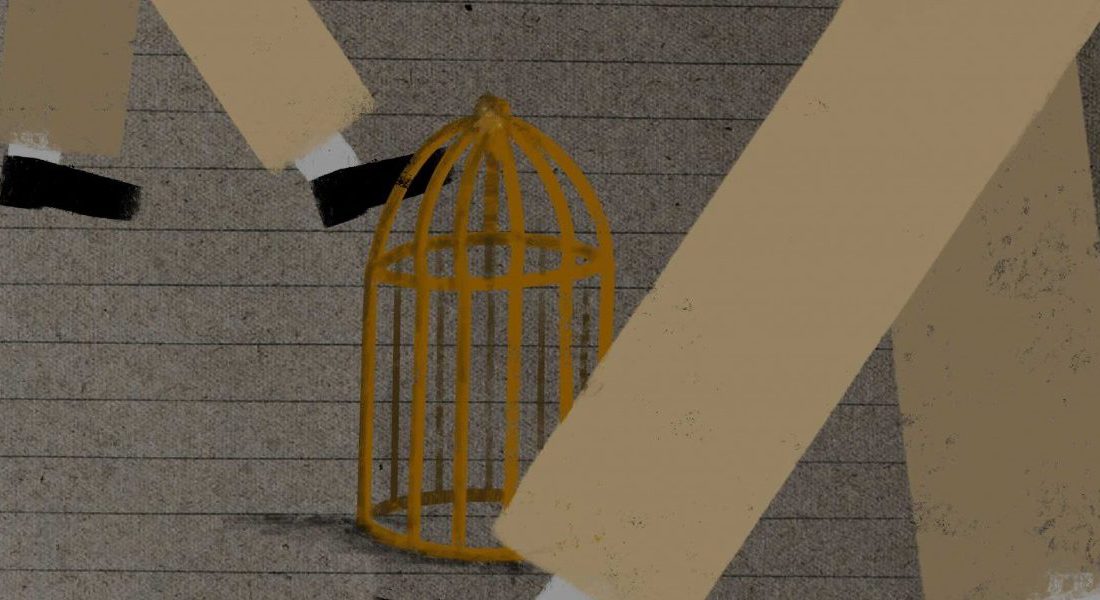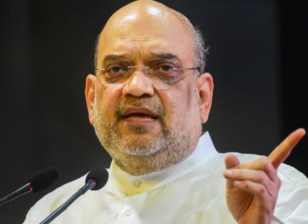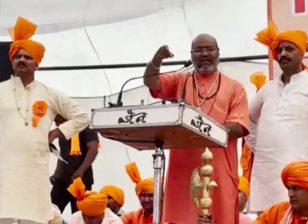The Real ‘State’ in India Is Its Criminal Justice System
The biggest tormentor of the people in India is paradoxically the Indian state itself.
By N.C. Asthana
We are living in times that are both frightening and strange. They are frightening because the Indian society is being driven by a binary system. Either you conform to the majoritarian or official narrative, or you are branded a traitor of some sort – jihadi, urban Naxal, or ISI agent who must be jailed or tormented by the state.
They are strange because, at least on paper, we have a constitution that is supposedly one of the most ornate and idealistic constitutions in the world and which, paradoxically, watches helplessly as the state indulges in rampant repression of the people.
India has had the privilege of having its laws defined in a large number of progressive judgments of the Supreme Court. Unfortunately, there is a huge and frustrating gap between what is lawfully expected of the state as per the judgments and what it delivers to its citizens – an excruciating dichotomy. If the police are able to regularly defy the orders of the Supreme Court, it is because they are assured of protection by a partisan state or the party in power whose political agenda they seek to further.
American political and social activist Abbie Hoffman had said, “You measure a democracy by the freedom it gives its dissidents, not the freedom it gives its assimilated conformists.”
The way the Indian state is going full throttle against any kind of dissent demonstrates that we are fast becoming an illiberal democracy. In its pursuit of absolute power, the law has been ‘weaponised’ by the state as the most preferred tool of persecution of all those who dissent.
The criminal justice system vests the state with so much discretionary power that it can get away literally with murder. And, it has remained so for political parties of all hues. Those who criticise the BJP government of today for its abuse of the UAPA, forget that it was the UPA government in 2008 that brought the dreaded Section 43D(5) in the UAPA through an amendment, which makes the grant of bail almost impossible.
The great Chinese strategist Sun Tzu had said, “Kill one frighten ten thousand”. This has been modified by the Indian state as, “Implicate one in a false case; frighten ten thousand.”

Illustration: The Wire
British legacy followed by independent India
The criminal justice system the British gave to us 160 years ago was designed essentially for their convenience or expedience.
For example, take Section 109 of CrPC that deals with detention of someone for whom it appears that he is trying to conceal his presence with an intention to commit crime. This was understandable in 1861. All sorts of criminals, habitual criminals, criminal tribes and the notorious thugs freely roamed our countryside. The very thin presence of police could not be expected to have hard intelligence on anyone of them. Hence that power to the police made some sense. You notice somebody suspicious and detain him.
However, now in independent India and in this era such power makes no sense and it becomes just another handle for the police and its masters to harass people. Now such laws have become a source of power for many — from the constable to the minister, they can get anybody booked on a frivolous charge anytime anywhere.
Starting from such simple provisions, we have a full range of instruments of ‘legal torture’. No other country of the world registers as many cases against its own citizens for having committed offences against the state as India does — these ‘crimes’ include hurting of religious sentiments or spreading communal disharmony (Sections 153A, 295A and 505 IPC etc.), sedition (Section 124A), and the UAPA (Unlawful Activities Prevention Act).
If the fabric of our society and the country is really so weak as to be threatened by mere words, then we are flogging a dead horse. If not, then the inescapable conclusion would be that, in this rampant abuse of the laws, the state has an ulterior motive of stifling dissent or settling political scores against whoever is perceived as the ‘other’. Anybody whose views or whose plight touches something raw in the majoritarian perspective is branded an anti-national, and the full might of the state is unleashed against him.
Predicament of the minorities
In a police state, as its definition goes, the government abuses its legal powers over its citizens. We have, however, become worse than a police state because the legal powers are used to ‘selectively’ target and persecute a part of the citizenry.
An analysis of the functioning of the police since independence shows that, far from upholding the law, police have been acting as the agents of the communal forces and a partisan state. Majoritarian narrative is seldom questioned by the state, and majoritarian violence is seldom punished. Riots take place all the time because rioters know that they will perhaps never be punished.
Unfortunately for our beloved country, the ‘beast within the collective subconscious of the people’ has been awakened and made to unleash all its fury without any feeling of guilt and with pro-active facilitation by the state.
Minorities in today’s India have a lot to despair of and much more to be afraid of as they face the ‘double whammy’ — the combined might of the ‘hostile’ majority and the state using every trick in the book to debase them, to humiliate them, to injure their dignity and self-respect so much that they accept their existence as ‘vanquished people’, surviving at the mercy of the majority in a land they are ‘historically’ not entitled to stand on.
A clever exploitation of the criminal justice system is the key to keep the minorities tyrannised while the state could continue pretending to ride the moral high horse.

Women walk past police during clashes with stone pelters in Srinagar, Kashmir Photo: Reuters/Cathal McNaughton.
All the 32 accused in the Babri Masjid demolition case were acquitted by the trial court. To my knowledge, the CBI has not filed an appeal in the high court against the verdict. It can only mean that the state or the party in power does not want to file an appeal for fear of alienating the majority, riding on whose sentiments they had grabbed power.
For the notorious Hashimpura massacre of 42 Muslims by the Uttar Pradesh police itself, it took over 31 years for the guilty policemen to be convicted by the Delhi high court in 2018. The high court concluded, “A disturbing aspect of the present case is the targeted killings of persons belonging to one minority community…This was a case of a targeted killing revealing an institutional bias within the law enforcement agents.”
The culprits of the massacre of 72 Muslims in Maliyana are yet to be punished 34 years later also — the case has been adjourned 900 times!
In almost every communal riot of this country, whether it was Delhi (1984) or Delhi (2020), police have been found to let the minorities ‘suffer’ at the hands of the majority, or ‘punish’ them by implicating them in false cases.
The ‘deep state’ is the system itself
A 1999 Hollywood science-fiction action film The Matrix depicts a dystopian future in which humanity is unknowingly trapped inside a simulated reality, the ‘Matrix’, which intelligent machines have created. The purpose is to keep the humans distracted while exploiting their bodies as an energy source. Nobody really understands what the Matrix is.
A character Morpheus explains, “The Matrix is a system. That system is our enemy. But when you’re inside, you look around, what do you see? The very minds of the people we are trying to save.”
So is the case with India. The biggest tormentor of the people in India is paradoxically the Indian state itself that torments the people using the very ‘criminal justice system’ it has created supposedly for the people.
To paraphrase Alfred Tennyson, “For parties may come and parties may go, but the imperious State goes on forever.”
Dr. N. C. Asthana is a retired IPS officer and a former DGP of Kerala. He has authored 49 books and 76 research papers. His latest work is ‘State Persecution of Minorities and Underprivileged in India’. This is the last in a four-part series on the ‘Defective Gene Pool of Indian laws. He tweets as @NcAsthana.
This article originally appeared in The Wire




